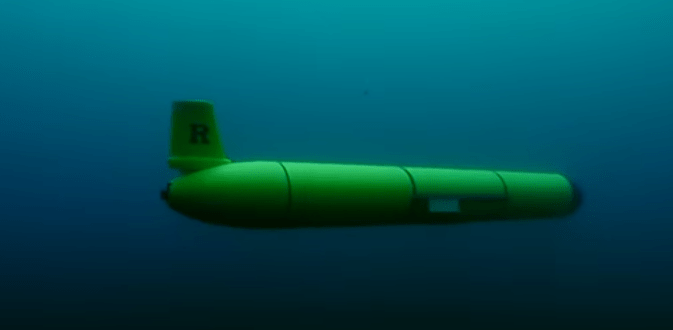BTN.com staff, November 5, 2015
During football and basketball games, BTN LiveBIG will spotlight notable examples of research, innovation and community service from around the conference. In-Game stories will provide more background on these features, and the opportunity to view the videos again.
The world?s oceans cover more than two-thirds of its surface, and they?re home to Earth?s largest heat reservoirs and vast natural resource deposits. Yet, much about them remains a mystery to us.
?The ocean essentially regulates all life on earth and we don?t really know how it works,? said Professor Oscar Schofield, an oceanographer with Rutgers University?s Coastal Ocean Observation Laboratory, or COOL. ?Going to sea on a ship to do research can be dangerous, it?s very expensive, and it removes you from your family.?
But those days of logging long, arduous hours on a research vessel may be over, thanks to Rutgers? fleet of ocean-going, submersible robots, which they call gliders.
?We decided two decades ago to essentially develop new ways to study the ocean because you can?t be out there in ships all the time,? Schofield explained. ?What we?ve focused on is developing robotic technologies. The robots can be out there all the time. You can send a robot out in a hurricane and you lose it, you lose it. You can?t send a human out in a hurricane.?
Moving slowly beneath the surface of the water, the gliders use an array of sensors (each roughly the size of a penlight) to collect a whole host of data from their environment, such as salinity, temperature, chemical composition and current flow. The robots surface intermittently to transmit that data back to the lab using a global cell-phone signal.
And the uses for the gliders have proved manifold.
?We?ve used the ocean gliders to study how hurricanes intensify,? Schofield explained, ?how penguins forage in the Antarctic, how ice sheets are melting both in the Arctic and Antarctic. We study fisheries, water quality ? anything that happens in the ocean, now a robot can go out and sample for us.?
[btn-post-package]The COOL team works alongside the Department of Homeland Security, the National Science Foundation and the U.S. Navy. In fact, the Navy is the only organization that possesses an ocean glider fleet on par with Rutgers?. International partnerships have allowed for deployments in every ocean on Earth.
Having the best and most up-to-date information on oceanic conditions is crucial. Schofield noted our network of oceans is vital to how much air we have to breathe, how much food we have to sustain us and countless other biological systems we depend upon.
?I know that the ocean is changing in my lifetime, and for my kids, my family and society, I want to understand where it?s going to be tomorrow.?
Watch the video above to see the gliders in action.
By John Tolley







 Basketball is back! Find available live games on our B1G+ app via BigTenPlus.com.
Basketball is back! Find available live games on our B1G+ app via BigTenPlus.com. 
